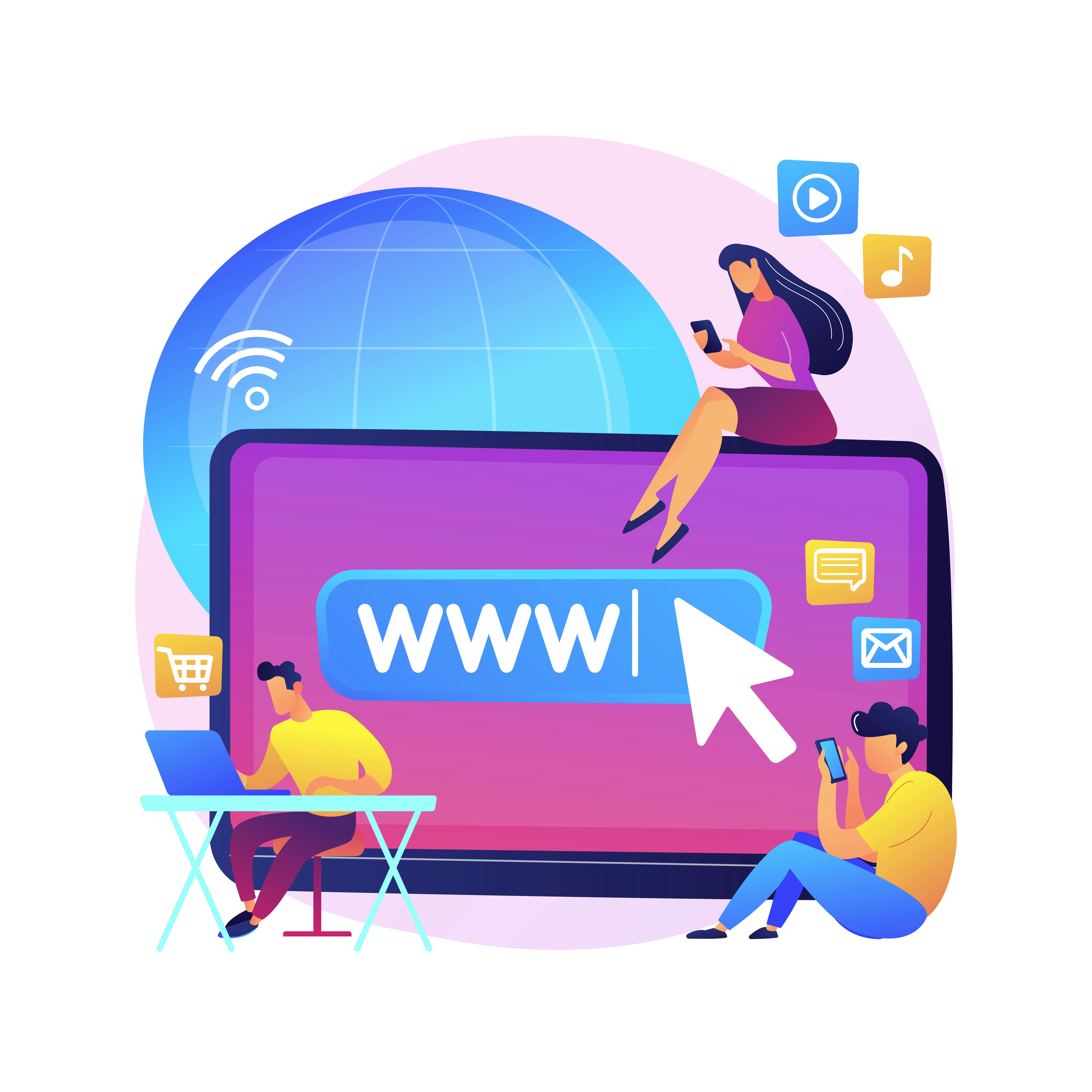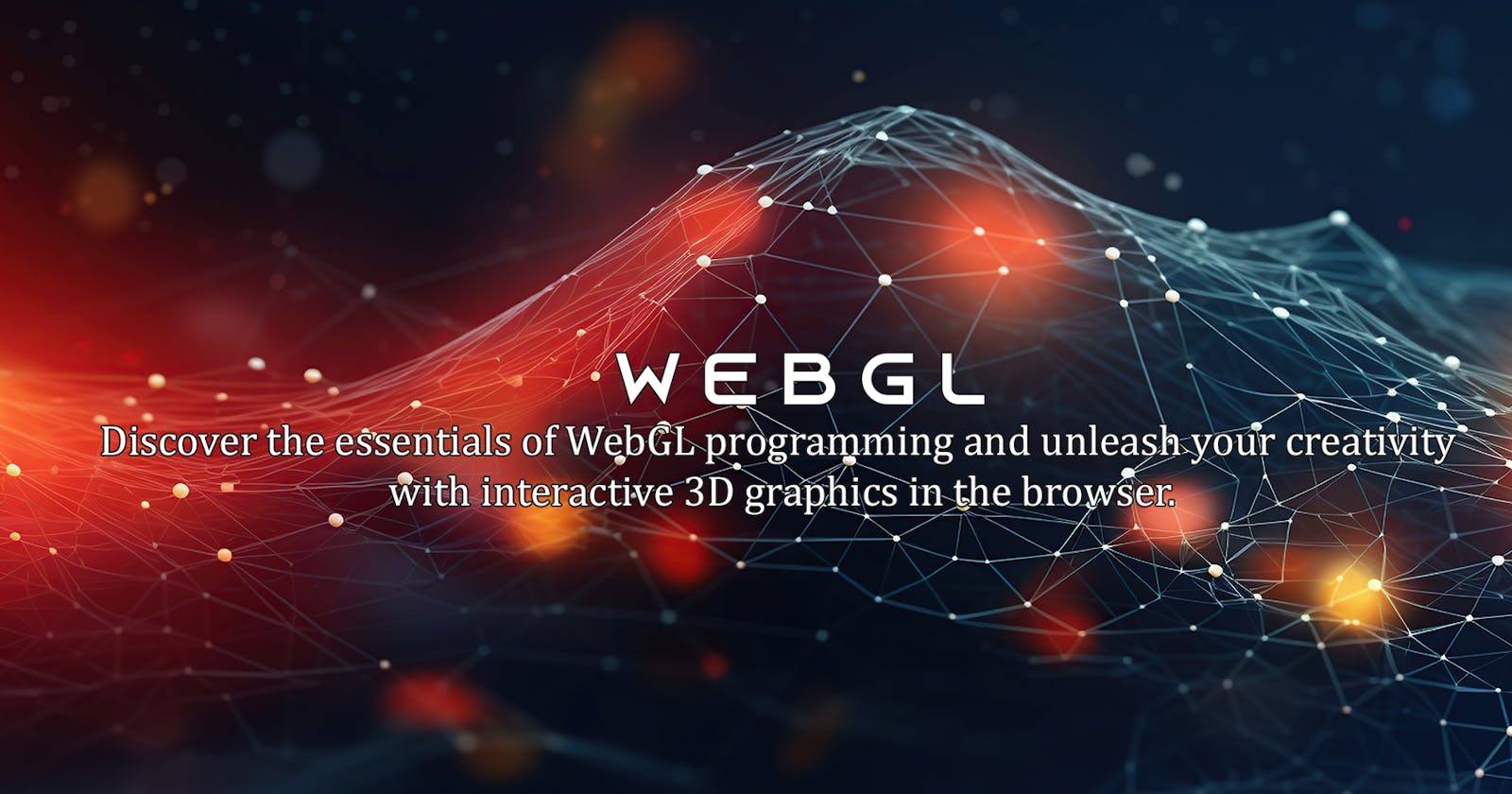Exploring the Power of WebGL
Unleashing the Creative Potential of Browser Graphics
In the vast web development landscape, technological advancements continue to push the boundaries of possibilities within browser limits and one of the most notable such innovations is WebGL. It’s not just another tool in the developer’s kit; It is the gateway to immersive, visually stunning experiences right in the browser window.
What is WebGL?
WebGL, or Web Graphics Library, is a JavaScript API that enables interactive 2D and 3D graphics rendering in any compatible web browser, without the need for additional plugins WebGL by the same company as the Khronos Group of standards that on OpenGL and Vulkan leverage the power of hardware-accelerated graphics to deliver high-performance graphics across the web.
The Power of Real-Time Rendering

One of the strongest aspects of WebGL is its ability to perform real-time rendering. This means that complex scenes, animations and simulations can be created and displayed dynamically with minimal latency, providing users with an interactive and engaging experience Whether they are showing 3D models of authentic, creating dynamic data visualizations, or developing interactive games, WebGL opens up a world of possibilities for designers and developers.
Breaking Down Barriers
In the past, creating high-quality multimedia content for the web often required proprietary plugins or extensive browser support for specific technologies. However, WebGL removes these obstacles by providing a standardized, platform-based solution that works well across a wide range of devices and browsers This democratization of graphical design empowers developers provide exciting content without worrying about assembly issues or vendor closures.
Pushing the Limits of Creativity
The only limit to WebGL is your imagination. From interactive mapping and data visualization to virtual reality experiences and interactive storytelling, WebGL enables developers to create experiences that attract and engage users that were previously unimaginable perhaps you’re an experienced professional looking to push the boundaries of web graphics or a novice eager to explore the possibilities of interactive storytelling that provides a beautiful canvas Your creativity can be expressed.
Getting Started with WebGL
Although WebGL can seem daunting at first glance, there are many resources to help you get started. From tutorials to online tutorials to open source library programming, there is no shortage of help for aspiring WebGL developers. Whether you want to dive headfirst into the intricacies of 3D graphics design or take a more gradual approach through testing and research, the journey to mastering WebGL is as rewarding as experience the types you build along the way.
Step 1: Setting Up the Canvas
First, we need to create an HTML canvas element to serve as our rendering surface:

<canvas id="glCanvas" width="400" height="400"></canvas>
Step 2: Getting the WebGL Context
Next, we'll obtain the WebGL rendering context from the canvas:
const canvas = document.getElementById('glCanvas');
const gl = canvas.getContext('webgl');
if (!gl) {
console.error('WebGL not supported, please use a compatible browser.');
}
Step 3: Defining Shaders
WebGL uses shaders to determine the final appearance of rendered objects. We'll define a vertex shader and a fragment shader:
// Vertex shader
const vertexShaderSource = `
attribute vec2 a_position;
void main() {
gl_Position = vec4(a_position, 0, 1);
}
`;
// Fragment shader
const fragmentShaderSource = `
precision mediump float;
void main() {
gl_FragColor = vec4(1, 0, 0, 1); // Red color
}
`;
Step 4: Compiling and Linking Shaders
Now, we'll compile the shaders and link them into a shader program:
function compileShader(shaderSource, type) {
const shader = gl.createShader(type);
gl.shaderSource(shader, shaderSource);
gl.compileShader(shader);
if (!gl.getShaderParameter(shader, gl.COMPILE_STATUS)) {
console.error('Shader compilation error:', gl.getShaderInfoLog(shader));
gl.deleteShader(shader);
return null;
}
return shader;
}
const vertexShader = compileShader(vertexShaderSource, gl.VERTEX_SHADER);
const fragmentShader = compileShader(fragmentShaderSource, gl.FRAGMENT_SHADER);
const shaderProgram = gl.createProgram();
gl.attachShader(shaderProgram, vertexShader);
gl.attachShader(shaderProgram, fragmentShader);
gl.linkProgram(shaderProgram);
if (!gl.getProgramParameter(shaderProgram, gl.LINK_STATUS)) {
console.error('Shader program linking error:', gl.getProgramInfoLog(shaderProgram));
}
Step 5: Rendering the Triangle
We'll define the vertices of our triangle and render it using the shader program:
// Define triangle vertices
const vertices = [
0, 0.5, // Top
-0.5, -0.5, // Bottom left
0.5, -0.5 // Bottom right
];
// Create vertex buffer
const vertexBuffer = gl.createBuffer();
gl.bindBuffer(gl.ARRAY_BUFFER, vertexBuffer);
gl.bufferData(gl.ARRAY_BUFFER, new Float32Array(vertices), gl.STATIC_DRAW);
// Get attribute location
const positionAttribLocation = gl.getAttribLocation(shaderProgram, 'a_position');
gl.vertexAttribPointer(positionAttribLocation, 2, gl.FLOAT, false, 0, 0);
gl.enableVertexAttribArray(positionAttribLocation);
// Clear the canvas
gl.clearColor(0, 0, 0, 1);
gl.clear(gl.COLOR_BUFFER_BIT);
// Use shader program
gl.useProgram(shaderProgram);
// Draw the triangle
gl.drawArrays(gl.TRIANGLES, 0, 3);
Step 6: Result
Now, when you open the HTML file containing this code in a WebGL-compatible browser, you should see a red triangle rendered on the canvas.
Congratulations on completing this introductory journey into the world of WebGL! We’ve covered the steps needed to get started with WebGL, from setting up the canvas and getting a WebGL reference to defining shaders, compiling them, and defining basic templates
WebGL opens up the realm of possibilities for creating immersive and interactive web experiences, whether you're interested in creating 3D games, data visualizations, simulations, or multimedia presentations Through the basics we cover here you will get it right so you will delve deeper into the world of 3D graphic design , your on the web It is also geared to unleash creativity
Remember, WebGL is just the beginning. As you continue to explore and experiment with WebGL, you’ll discover new techniques, libraries, and frameworks that allow you to push the boundaries of what’s possible on the web
So, what are you waiting for? Take what you learned today and start your WebGL journey. Whether you’re an experienced developer or a curious one, there’s never been a better time to harness the power of WebGL and bring your ideas to life on the web
Happy coding, and may your WebGL adventures be filled with creativity, discovery, and endless possibilities!
If you have any questions, ideas, or projects you’d like to share, feel free to leave a comment below. I’d love to hear from you!
Until next time, keep exploring, creating, and pushing the boundaries of what’s possible in WebGL.
Happy coding! 🚀✨

